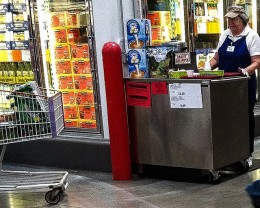The Story Behind Costco’s Free Samples

When I was a kid, my father would devise a cheap lunch that consisted of taking me to Costco to snack on some free samples, and then we’d split the $1.50 hot dog and soda combo in the food court (it’s still $1.50 today — an amazing deal after taking inflation into account). This was done more out of necessity than frugality, though I was unaware of it at the time. I was more fixated on that fact that stores gave all those samples away for free.
The Atlantic writes that this is a tactic that actually boosts sales, builds loyalty, and occasionally gets people to buy things they wouldn’t have picked up at the store in the first place:
Ariely adds that free samples can make forgotten cravings become more salient. “What samples do is they give you a particular desire for something,” he says. “If I gave you a tiny bit of chocolate, all of a sudden it would remind you about the exact taste of chocolate and would increase your craving.”
But maybe the most interesting part of this story has less to do with the premise of the Atlantic article, which is to examine the psychology behind free samples; it’s about the labor behind free samples and you’d miss it if you didn’t read until the very end:
Costco’s samples and food courts get customers in the door, but it appears that their reliance on product-demonstration contractors allows them to help the bottom line in some less savory ways. The company is known for its generous benefits package — health care, vision, dental, and 401(k)s for just about everyone — but employees of Club Demonstration Services don’t seem quite so lucky.
The North Bay Bohemian, a San Francisco Bay Area alt-weekly, reported in 2008 that many CDS employees received a much more limited benefits package and were paid 20 percent less per hour compared with Costco employees. TheBohemian estimated that these employees represented 10 percent of Costco’s workforce. CDS, meanwhile, has no clients other than Costco — which makes the CDS-Costco salary disparity look pretty groundless. This stain, though, does little to taint people’s conception of Costco, and all of the fun that a trip there entails.
The North Bay Bohemian story reports that these demonstrators are often “already disadvantaged” — they are “aging folks, recent immigrants and disabled” who worked for less money than 90 percent of the other employees in the store. I wonder what my father, an immigrant who also worked in low-paying jobs, would have thought if he had discovered this fact while we grazed on free samples, looking for a cheap meal.
Photo: m01229
Support The Billfold
The Billfold continues to exist thanks to support from our readers. Help us continue to do our work by making a monthly pledge on Patreon or a one-time-only contribution through PayPal.
Comments